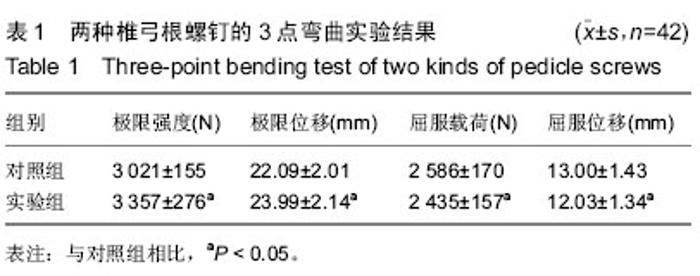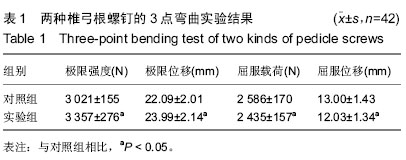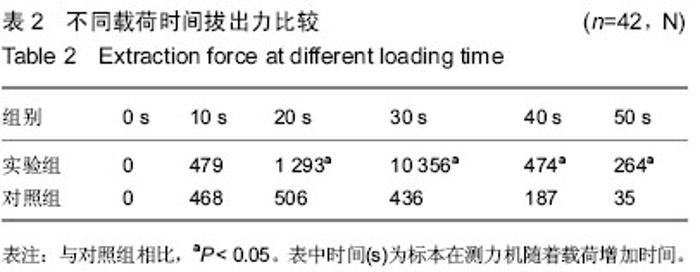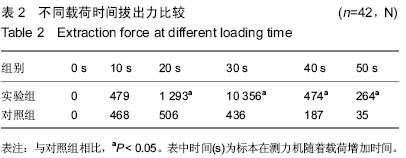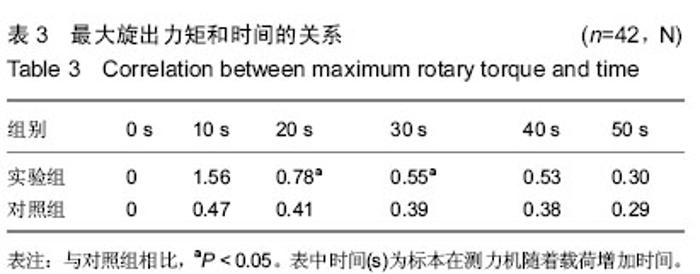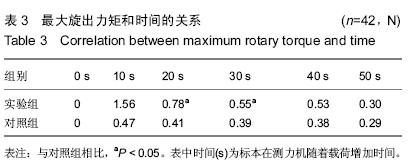| [1] 樊仕才,朱青安,王柏川,等.聚甲基丙烯酸甲醋强化对骨质疏松推弓根螺打固定的生物力学作用[J].中华骨科杂志,2001,21(2):93-99.
[2] 杨惠林,Yuan HA,陈亮,等.推体后凸成形术治疗老年骨质疏松脊柱压缩骨折[J].中华骨科杂志,2003,23(44):262-265.
[3] 雷伟,吴子祥,李明全,等.膨胀式脊柱推弓根螺打固定的生物力学研究[J].中国脊柱脊髓杂志,2004,14(21):669-672
[4] 徐达强,杨惠林,邹俊,等.骨水泥在松质骨渗透性的流体力学研究[J].苏州大学学报(医学版),2007,27(2):207-208.
[5] 朱青安,李鉴软,赵卫东,等.PMMA强化和修复推弓根螺打的生物力学研究[J].中华骨科杂志,2000,20(5):283-628.
[6] 窦宏仪,王磊,徐士清,等.注射型丙烯酸树脂骨水泥的实验研究及生物学性能评价[J].生物医学工程与临床,2005,9(2):73-75.
[7] 徐宝山,胡永成,唐天驹,等.经皮推体成形术的实验研究和临床应用[J].中华骨科杂志,2002,26(6):323-330.
[8] Anderson GF, Hussey PS. Population aging: a comparison among industrialized countries. Health Aff (Millwood). 2000; 19(37):191-203.
[9] Reitman CA, Nguyen L, Fogel GR. Biomechanical evaluation of relationship of screw pullout strength, insertional torque, and bone mineral density in the cervical spine. J Spinal Disord Tech. 2004;17(4):306-311.
[10] Halvorson TL, Kelley LA,Thomas KA, et al. Effects of bone mineral density on pedicle screw fixation. Spine (Phila Pa 1976). 1994;19(21):2415-2420.
[11] Weinstein JN, Spratt KF, Spengler D, et al. Spinal pedicle fixation: reliability and validity of roentgenogram-based assessment and surgical factors on successful screw placement. Spine (Phila Pa 1976). 1988;13(9):1012-1018.
[12] Polly DW Jr, Orchowski JR, Ellenbogen RG. Revision pedicle screws. Bigger, longer shims-what is best? Spine (Phila Pa 1976). 1998;23(12):1374-1379.
[13] 吴云刚,石志才,张晔,等.骨水泥强化椎体提高椎弓根螺钉置入后的稳定性[J].中国组织工程研究与临床康复,2010,14(42): 7951-7954.
[14] 朱青安,李鉴轶,赵卫东,等.聚甲基丙烯酸甲酯强化和修复椎弓根螺钉的生物力学研究[J].中华骨科杂志,2000,20(5):283-286.
[15] 樊仕才,刘世学,邓月兴,等.强化骨质疏松椎弓根螺钉对脊柱稳定性影响的生物力学研究[J].中国修复重建外科杂志,2004,18(3): 168-170.
[16] Miyakoshi N, Abe E, Shimada Y, et al. Outcome of one-level posterior lumbar interbody fusion for spondylolisthesis and postoperative intervertebral disc degeneration adjacent to the fusion. Spine (Phila Pa 1976). 2000;25(14):1837-1842.
[17] 刘臻,邱勇.Oswestry功能障碍指数在腰痛患者中的国际化应用现状[J].中国脊柱脊髓杂志,2008,18(93):550-553.
[18] 刘绮,马超,伍少玲,等.Oswestry功能障碍指数评定慢性腰痛患者的效度分析[J].中国康复医学杂志,2010,25(3):228-231.
[19] 陈之青,陈其昕.腰椎间盘退变时椎体的形态变化及其临床意义[J].中国脊柱脊髓杂志,2003,13(7):398-401.
[20] 苗胜,沙广钊,王永东,等.不同程度退变的软骨终板的影像学变化及其临床意义[J].中国骨伤,2008,21(6):414-417.
[21] 张亘瑷,陈建庭,王灵秀,等.定向灌注椎弓根螺钉的生物力学分析[J].中国组织工程研究与临床康复,2008,12(22):4225-4228.
[22] Nauta HJ, Soukup VM, Fabian RH, et al. Punctate midline myelotomy for the relief of visceral cancer pain. J Neurosurg. 2000;92(2):125-130.
[23] Mahato NK. Dorsal iliac dimensions in elderly females: anatomical considerations in two bolt iliac foundation construct. Surg Radiol Anat. 2012;34(2):145-149.
[24] He X, Liang A, Gao W, et al. The relationship between concave angle of vertebral endplate and lumbar intervertebral disc degeneration. Spine (Phila Pa 1976). 2012;37(17): E1068-E1073.
[25] Erasmus MA, Turner PV, Nykamp SG, et al. Brain and skull lesions resulting from use of percussive bolt, cervical dislocation by stretching, cervical dislocation by crushing and blunt trauma in turkeys. Vet Rec. 2010;167(22):850-858.
[26] 杨惠林,Yuan HA,陆俭,等.球囊扩张椎体后凸成形术治疗骨质疏松性椎体压缩骨折[J].苏州大学学报:医学版,2002,22(4): 406-409.
[27] 韩琪,高岩,邓潮玉,等.Ni-Ti 形状记忆合金椎体扩张器的设计与制作[J].稀有金属材料与工程,2012,41(2):324-329.
[28] 包欣南,吴采荣.经椎弓根椎体支柱块置入治疗胸腰椎骨折的短期疗效观察[J].中华创伤杂志,2010,26(9):822-825.
[29] 方晓辉,丁亮华,樊友亮,等.微创经椎弓根前柱植骨支柱块置入治疗匈腰椎压缩骨折[J].中国脊柱脊髓杂志,2011,21(11): 890-894.
[30] 郑召民,邝冠明,董智勇,等.应用新型 Vessel-X 骨材料填充器注射聚甲基丙烯酸甲酯的实验研究[J].中华骨科杂志,2008,28(8): 678-683.
[31] 杨惠林,Yuan HA,王根林,等.Catheter fabric 椎体后凸成形术的初步临床应用[J].中华创伤骨科杂志,2010,12(2):105-108.
[32] 杜良杰,李建军.国人成年男性胸腰椎椎弓根径线和偏角与脊椎节段序数的相关性研究[J].中国脊柱脊髓杂志,2009,19(7): 545-549.
[33] Sanden B, Olerud C, Mallmin M, et al. JBone Joini Surg Br. 2002;84(3):387-391.
[34] McKoy BE, An YH. An injectable cementing screw for fixation in osteoporotic bone. J Biomed Mater Res. 2000;53(3): 216-220.
[35] Yazu M, Kin A, Kosaka R, et al. Efficacy of novel-concept pedicle screw fixation augmented with calcium phosphate cement in the osteoporotic spine. J Orthop Sci. 2005;10(16): 56-61.
[36] 孟双全,朱贤友,王大鹏.经皮椎体成形术在椎体压缩骨折中的应用[J].中国误诊学杂志,2004,4(12):2047-2048.
[37] Becker S, Chavanne A, Spitaler R, et al. Assessment of different screw augmentation techniques and screw designs in osteoporotic spines. Eur Spine J. 2008;17(11):1462-1469.
[38] Chen LH, Tai CL, Lai PL, et al. Pullout strength for cannulated pedicle screws with bone cement augmentation in severely osteoporotic bone: influences of radial hole and pilot hole tapping. Clin Biomech (Bristol Avon). 2009;24(8):613-618.
[39] Johnson AE, Keller TS. Mechanical properties of open-cell foam synthetic thoracic vertebrae. J Mater Sci Mater Med. 2008;19(3):1317-1323. |
